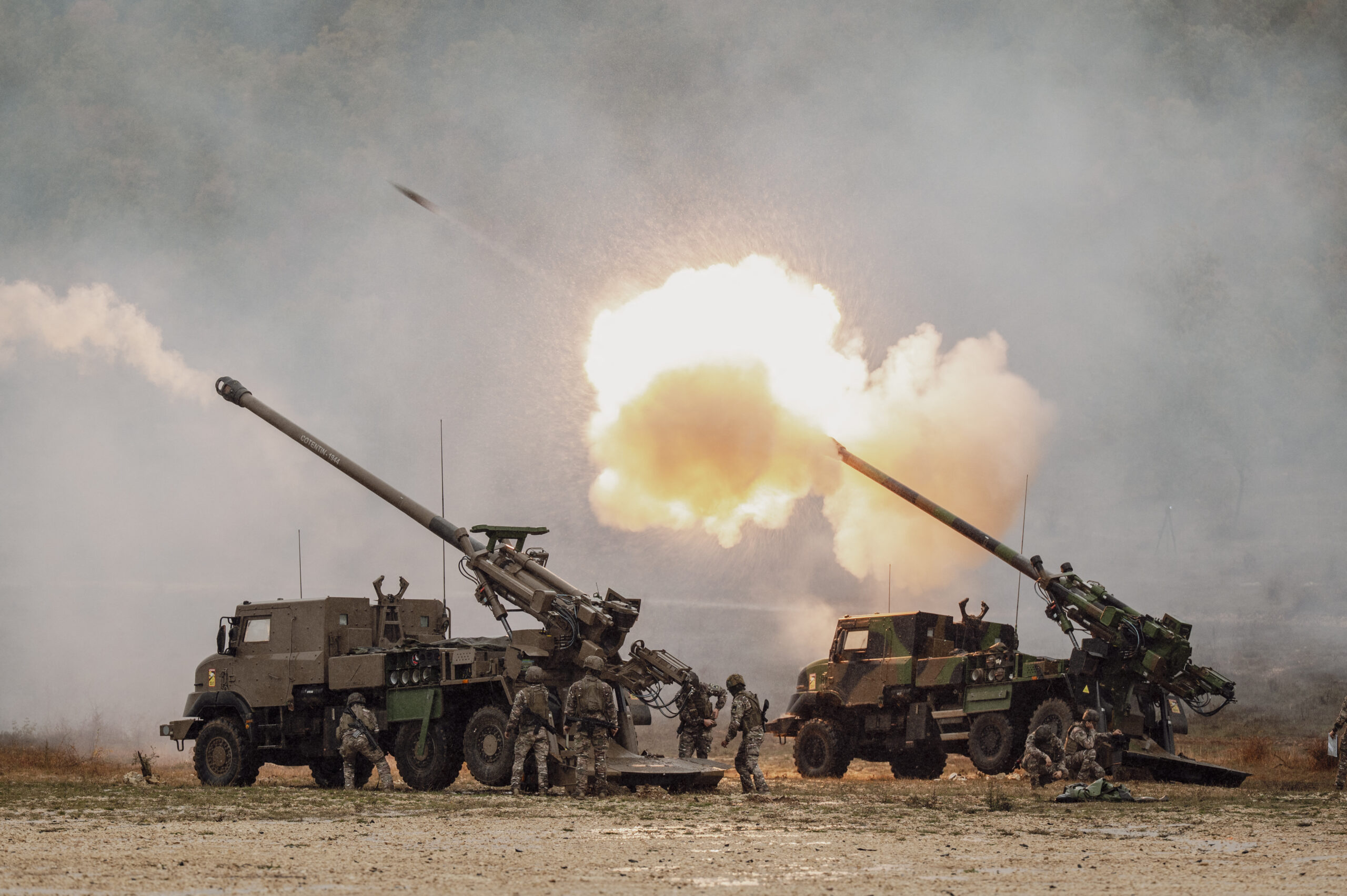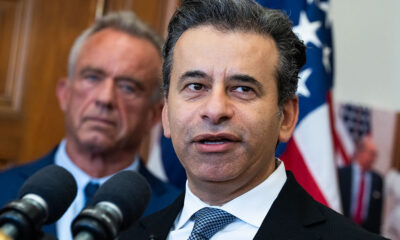World
French Army Demonstrates Artillery Adaptations in Challenging Conditions

A recent artillery demonstration by the French Army at Camp de Canjuers showcased the adaptations prompted by lessons learned from the ongoing conflict in Ukraine. Despite the pouring rain and muddy conditions, which grounded drones and helicopters, the event highlighted the evolving nature of modern warfare.
The demonstration took place on October 27, 2023, at one of Europe’s largest military camps, where foreign military delegations and arms manufacturer KNDS were in attendance. The adverse weather conditions not only hampered aerial operations but also complicated logistics, with civilian flights diverted from nearby Nice airport.
Artillery remains critical on the battlefield, according to Lt. Col. Renaud Durbecq, operations and training chief of the 35th Parachute Artillery Regiment (35e RAP). He emphasized the enduring importance of artillery, stating, “Artillery is becoming increasingly important on the battlefield, since our guns are precisely the weapon that allows us to fire at the furthest range – there where, most often, drones cannot go.” The regiment primarily operates the Caesar 155mm howitzer, known for its mobility and range.
As part of its adaptation to a drone-dominated environment, the regiment has significantly expanded its drone capabilities over the past year. Durbecq reported that the number of drones in the regiment has increased fivefold, with the count of drone pilots tripled and flight hours doubled. The Delair DT46 drone, with an operational range of around 80 kilometers, is used for intelligence gathering and target acquisition, while smaller drones are utilized for close defense and reconnaissance missions.
Innovative Countermeasures and Tactical Changes
One notable innovation presented at the demonstration was the introduction of the Proteus anti-drone cannon. This system is designed to neutralize unmanned aerial threats, filling a critical gap in counter-unmanned aerial systems (UAS) capabilities. The 35e RAP tested the Proteus, successfully downing drones using a combination of the 20mm cannon and a handheld jammer developed by MC2 Technologies.
Durbecq pointed out the “acceleration of the intelligence loop” as a significant shift brought about by the integration of drones into artillery operations. Drones are now directly linked to fire-control communications, enabling immediate artillery strikes upon target detection. Plans are in place to double the regiment’s DT46 capacity in the coming year, indicating a strong commitment to enhancing drone capabilities.
The challenges posed by drones have also led to tactical changes in artillery operation. Olivier Fort, a former artillery colonel and current executive at KNDS, noted that prepositioning artillery rounds at firing locations has become a necessary strategy. This approach minimizes the risk of secondary explosions from drone attacks, which have been responsible for high attrition rates among artillery pieces in Ukraine. Fort stated that around 75% of artillery losses in Ukraine are attributed to remotely operated munitions, underscoring the need for innovative defensive measures.
Preparing for Future Conflicts
The need for greater combat mass has become evident in the current military landscape. The 35th Parachute Artillery Regiment is actively preparing reserves for operational readiness, with reservists receiving training to enhance artillery expertise. Within the broader 11th Parachute Brigade, there is a push to recreate mortar support teams, further integrating artillery into infantry operations.
Durbecq expressed satisfaction with the performance of the Caesar howitzer, citing its combination of mobility, range, and firepower as crucial in the current operational context. “Each system has its advantages and disadvantages,” he explained. “But as a user of the regiment, today I believe that I need a system that is reliable, and that must be its greatest quality.”
The adaptations demonstrated at Camp de Canjuers reflect a military in transition, learning from the realities of modern warfare and the lessons of ongoing conflicts. As the French Army prepares for future challenges, the integration of advanced technologies and innovative tactics will play a critical role in maintaining operational effectiveness on the battlefield.
-

 Science2 weeks ago
Science2 weeks agoResearchers Challenge 200-Year-Old Physics Principle with Atomic Engines
-

 Politics2 weeks ago
Politics2 weeks agoNHP Foundation Secures Land for 158 Affordable Apartments in Denver
-

 World7 days ago
World7 days agoBoeing’s Aircraft Production: Assessing Numbers and Challenges
-

 Lifestyle6 days ago
Lifestyle6 days agoTrump’s Push to Censor National Parks Faces Growing Backlash
-

 Entertainment6 days ago
Entertainment6 days agoSyracuse Stage Delivers Lively Adaptation of ‘The 39 Steps’
-

 Health2 weeks ago
Health2 weeks agoNeuroscientist Advocates for Flag Football Until Age 14
-

 Lifestyle2 weeks ago
Lifestyle2 weeks agoLongtime Friends Face Heartbreak After Loss and Isolation
-

 Science6 days ago
Science6 days agoAI Misidentifies Doritos Bag as Gun, Triggers Police Response
-

 Lifestyle7 days ago
Lifestyle7 days agoRed Bluff High School’s Elli Nolan Named Rotary Student of the Month
-

 Health2 weeks ago
Health2 weeks agoFDA Launches Fast-Track Review for Nine Innovative Therapies
-

 Politics5 days ago
Politics5 days agoNFL Confirms Star-Studded Halftime Show for Super Bowl LVIII
-

 World2 weeks ago
World2 weeks agoGlobal Military Spending: Air Forces Ranked by Budget and Capability









